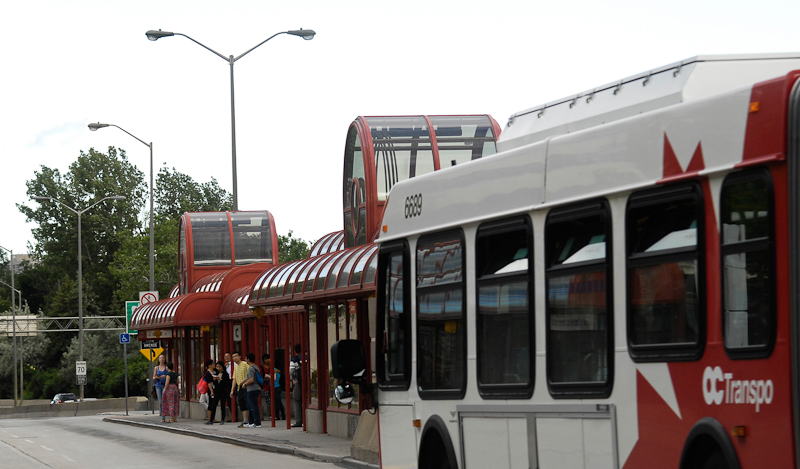Student commuters coming from the east end of Ottawa will have their commutes lengthened up to 16 minutes longer as OC Transpo’s eastern transitway link between Blair and Hurdman stations will close June 28.
The 32-year-old stretch of transitway will undergo a conversion to light rail transit (LRT), and is expected to take three years to complete. It will be part of the planned Confederation Line.
In the meantime, OC Transpo buses are set to run on a dedicated lane on Highway 417, parallel to the transitway, but with exits being used alongside private automobiles.
Buses will stop at temporary transitway stations off of Highway 417.
The city of Ottawa is asking people who use transit to add 15-20 minutes to their trip, while automated announcements have been running on OC Transpo vehicles throughout June in preparation for the closure.
East end express routes are expected to take five to seven minutes longer, route 94 is expected to take from four to 12 minutes longer, route 95 about six to 16 minutes longer, and route 96 about five minutes longer.
Route 95 will be supplemented by the new route 91, which will run from Orléans to Baseline stations through Blair Station and downtown. It will bypass Train, Hurdman, and Lees stations.
Amber Tomkiewicz, a fourth-year Carleton University biology student who commutes to school using the transitway, said she was displeased with the length on the closure.
“They cut down the one route which is directly near my house, the 24, so that it will no longer stop at Hurdman, making me transfer onto the 95 at Blair,” she said. “There is no question that the 95 stop at Blair, as well as the 95 buses, will be ridiculously crowded on early weekday mornings.”
Peter Raaymakers, head of TransitOttawa.ca, said the closure of the transitway has been inevitable for over 40 years. The installation of the bus thruway was only a temporary fix, according to Raaymakers.
“The plan was always eventually converting it to rail,” he said. “In that process, it would be necessary to close the transitway so that they can do the construction.”
Jeff Kaluski, president of the Beacon Hill Community Association, said people are trying to find a way around it instead of complaining.
“No one’s cursing the government, or city hall,” Kaluski said.
Kaluski said that while closures provide temporary headaches to commuters, in the long run they will benefit everyone.
“When they announce all this construction to make things better, I say ‘let’s get it done,’ because it will have a positive impact in the end,” he said.
Raaymakers said while transit upgrades are necessary, too many at once can deter commuters, students especially, from becoming regular transit users.
“This is really going to challenge people’s trust of public transit,” he said. “So they should get ahead of the curve to keep giving people incentives to take transit.”
If people choose to drive during the closure instead of taking transit, Raaymakers said it will deter many commuters from using the LRT once completed, which may result in it being under-used.
Raaymakers pointed to stopping fare increases and prioritizing Presto card technology to give people more incentive.






